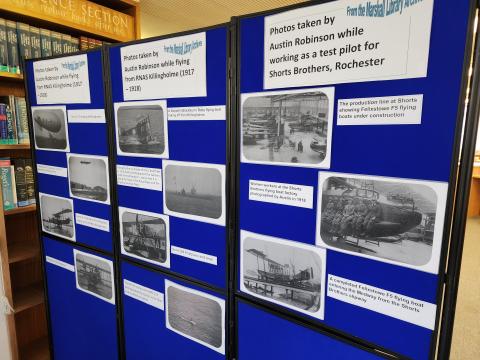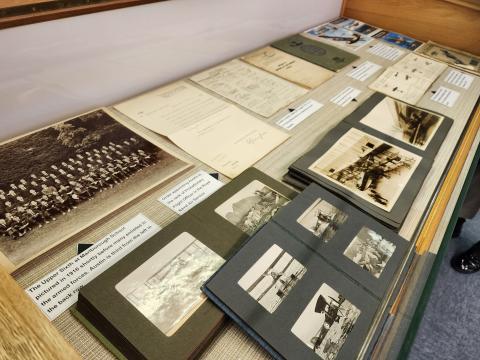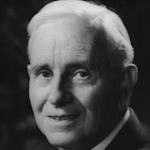Sir Edward Austin Gossage Robinson, CMG, OBE, FBA was an undergraduate at Christ's College, Cambridge, and a fellow of Sidney Sussex College, Cambridge.
Before becoming a prominent Cambridge economist, editor and economic adviser Robinson qualified as a pilot with the Royal Naval Air Service (RNAS), the air arm of the Royal Navy, and flew hundreds of hours in early seaplanes on long patrols over the North Sea. He was an enthusiastic photographer, and many of the photographs he took between 1917 and 1918 to illustrate his entry into military aviation, his training and experiences of combat and, finally, his time as a test pilot with Short Brothers, are displayed in the Marshall Library.
In 1926 he married Joan, daughter of Major-General Sir Frederick Maurice. Joan Robinson was the British post-Keynesian eminent economist and later who developed the theory of imperfect competition. From 1926 to 1928 Robinson was tutor to the Maharaja of Gwalior. He returned to Cambridge as a university lecturer in economics in 1929.
Later described by Geoff Harcourt as the ‘unsung hero’ of Cambridge economics, Austin Robinson through selfless service, often as secretary, sometimes as chairman of the Faculty Board of Economics and Politics, before and after the Second World War, more than anyone else he enabled the various opposing factions of the faculty to coexist, and its intellectual life thereby to thrive.


He was assistant editor and then joint editor of the Economic Journal for 36 years and Secretary of the Royal Economic Society for 25 years; treasurer of the International Economic Association for nine years and its president for three years. Many of the volumes of the latter's conferences are edited or jointly edited by Robinson. He was associated with the National Institute for Economics and Social Research; he carried a full lecturing load at Cambridge. In the 1920s and 1930s when he became a Fellow, first of Corpus Christi and then of Sydney Sussex.
The ‘Austin Robinson Building’ itself was christened so at his 90th-birthday party in the faculty coffee room, at which he gave a typically eloquent account of his supervisions by CR Fay, who he described as being as 'full of enthusiasms and excitements but completely innocent of any real understanding of Marshallian economics', and by Gerald Shove and Dennis Robertson.
Most of all, he contributed, unobtrusively but profoundly, to the various revolutions in economic thinking that occurred in Cambridge and the profession generally. He himself thought that the 1930s were the most 'creative period' in which to be an economist. For it was then, he argued, that the 'revolutions' in value theory, welfare economics, employment theory and the quantification of economics occurred.
He wrote two books in the 1930s, The Structure of Competitive Industry (1931) and Monopoly (1941); both were in the Cambridge Economic Handbook series and both are now regarded as classics.
His first book were important influences on Joan Robinson when she wrote The Economics of Imperfect Competition (1933). Austin Robinson's 'very bright' pupil Charles Gifford introduced Joan and Richard Kahn to the book's central concept which Austin himself named 'marginal revenue'. Joan Robinson also reported that an 'ingenious' scheme to make monopolists behave 'was first suggested by Mr Robinson in an answer written in an examination'.
Robinson was a member of the Cambridge 'circus' which, he argued, was an important irritant which helped Keynes to make his major pearl, The General Theory (1936), as he moved on from A Treatise on Money (1930).
Sir Edward Austin Gossage Robinson, CMG, OBE, FBA (20 November 1897 – 1 June 1993, Cambridge, England) was a University of Cambridge economist. He was an undergraduate at Christ's College, Cambridge, and a fellow of Sidney Sussex College, Cambridge.
Parts of this article use research for a paper written by Geoff Harcourt, sent to Julian Lorkin before Geoff’s own passing.








